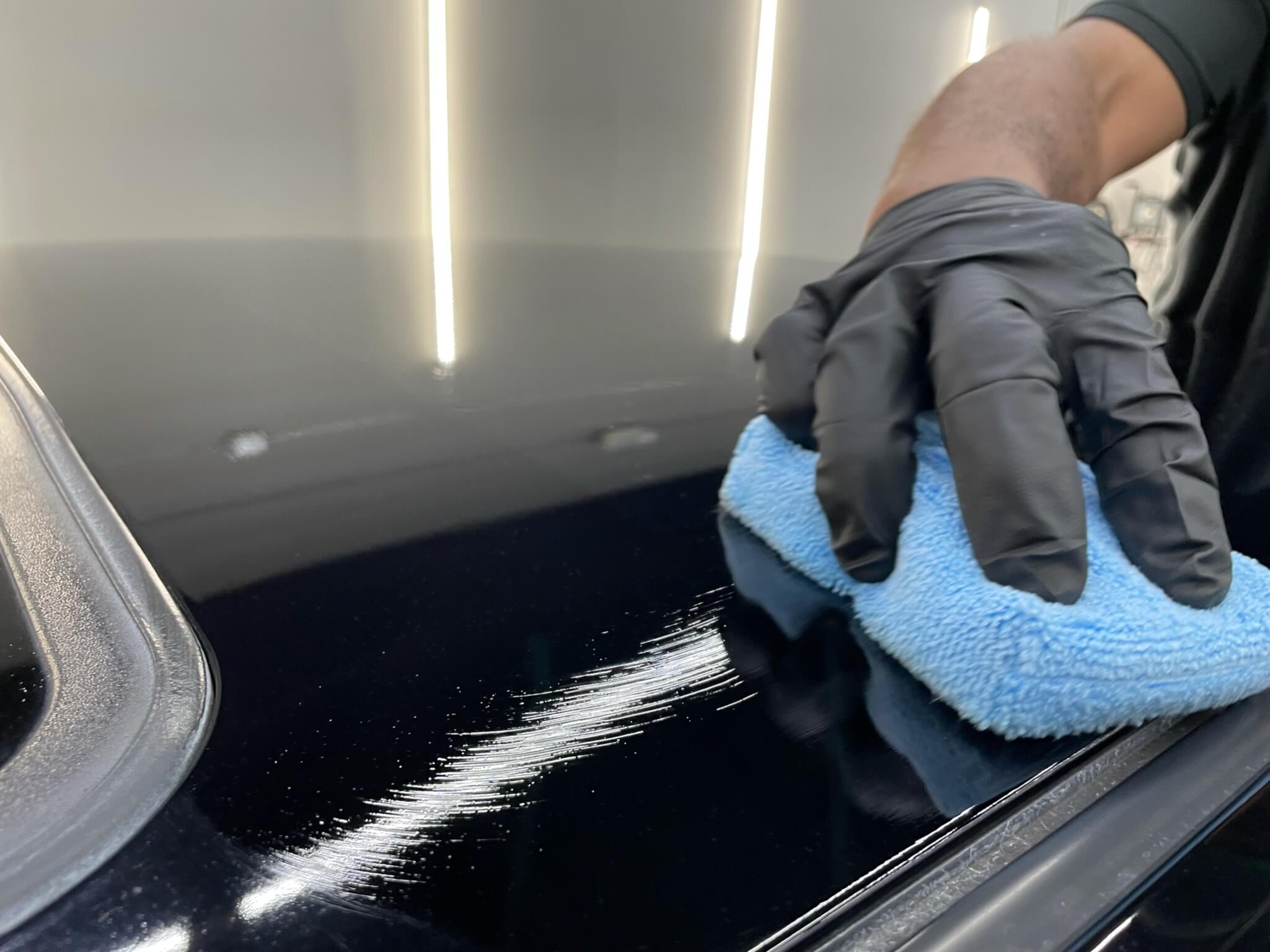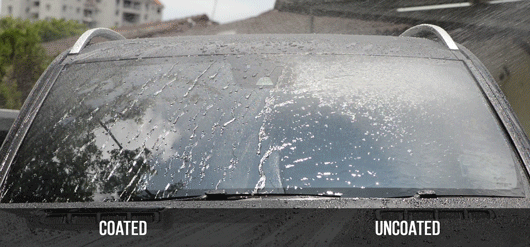Why Ceramic Layer Is the Ultimate Service for a Perfect Finish
Ceramic covering has emerged as a leading remedy for those seeking a remarkable finish for their vehicles, many thanks to its amazing sturdiness and safety attributes. What variables really established ceramic layer apart?
What Is Ceramic Covering?

When applied correctly, ceramic finishing produces a hydrophobic surface that pushes back water and dirt, making it easier to cleanse and maintain. Unlike conventional waxes or sealants, which commonly offer temporary security, ceramic coverings can last for numerous years, depending on the item top quality and application method. The process of using ceramic finish needs thorough prep work, consisting of detailed cleaning and often repaint correction, to make sure ideal bonding and efficiency.
Ceramic coverings are not limited to automotive surfaces; they can additionally be used on different products, consisting of glass, metal, and plastics, supplying a versatile service for improving security. Generally, ceramic layer represents a considerable innovation in surface security technology, integrating both useful and visual advantages for a vast variety of applications.
Advantages of Ceramic Coating
While many surface area protection alternatives exist, the advantages of ceramic covering attract attention because of its unique properties and resilient performance. Among the main advantages is its exceptional resilience. Ceramic Coating Philadelphia. Unlike conventional wax or sealants that call for constant reapplication, ceramic layers offer a resilient layer that can last for a number of years, dramatically lowering upkeep efforts
Another remarkable advantage is boosted defense against environmental contaminants. Ceramic coatings create a hydrophobic surface that repels water, dust, and different toxins, making it less complicated to clean up. This attribute not only preserves the vehicle's appearance yet likewise reduces the threat of deterioration and oxidation, especially in severe weather.
Additionally, ceramic layers offer remarkable resistance to UV rays, stopping fading and deterioration of paint in time. This UV security is important for maintaining the aesthetic value of surfaces and lorries revealed to guide sunlight.
Additionally, the glossy finish attained with ceramic layer enhances the overall aesthetic allure, offering surfaces a showroom-quality luster. In general, ceramic finishings stand for a substantial advancement in surface security innovation, offering enduring benefits that provide to both practical and aesthetic needs.
Exactly How It Works
Understanding the scientific research behind ceramic coverings exposes exactly how they give such exceptional security and durability. At its core, a ceramic layer is a fluid polymer that chemically bonds with the lorry's factory paint. This bonding develops a safety layer that is both hydrophobic and oleophobic, repelling water, dust, and oil. The main component of a lot of ceramic coatings is silicon dioxide (SiO2), which is derived from quartz. This compound adds to the finishing's firmness and resistance to scratches, UV rays, and environmental impurities.
The application procedure entails numerous steps, consisting of surface area prep work, which is vital to accomplishing ideal attachment. As soon as used, the layer undergoes a treating process, during which it solidifies and creates a semi-permanent bond with the paint surface. This bond is what distinguishes ceramic coatings from traditional waxes and sealers, providing a longer-lasting protective obstacle that can endure for years.
Additionally, the thickness of the finishing can boost its protective top qualities, ensuring that it can hold up against severe problems. Inevitably, the scientific research of ceramic finishes combines advanced products with ingenious application techniques to provide an unmatched degree of security and visual enhancement for automobiles.
Contrast With Standard Methods
The advantages of ceramic finishes become particularly evident when compared to standard paint protection methods such as waxes and sealers. While waxes use a short-lived luster, usually lasting a few weeks to a pair of months, ceramic coverings give a long-lasting safety layer that can endure for numerous years. This sturdiness significantly lowers the regularity of reapplication, making ceramic coatings a much more economical remedy gradually.
In addition, typical methods often require substantial prep work and numerous applications to accomplish a satisfying degree of defense. On the other hand, ceramic finishings bond at a molecular degree with the vehicle's Click Here surface area, developing a durable guard versus ecological impurities like UV rays, acid rain, and road salts. This bond boosts the car's resistance to scrapes and swirl marks, which prevail with standard waxes and sealants.
Moreover, the hydrophobic homes of ceramic finishes push back water and dust, leading to less complicated cleaning and upkeep. In comparison, wax and sealant-treated surfaces can bring in grime, demanding even more constant washing - Ceramic Coating Philadelphia. In general, ceramic coverings not only provide superior protection however additionally supply a more visually appealing and long-lasting surface, establishing them as the recommended option for discerning car owners
Application and Maintenance Tips

Utilizing a foam applicator, apply the finish in small sections, adhering to the maker's standards regarding thickness and overlap. Allow adequate healing time between layers, typically 24 hours, to make certain correct bonding. After application, it is crucial to prevent direct exposure to water or extreme aspects for at least a week to allow the layer to totally cure.
Furthermore, making use of a ceramic maintenance spray can boost the layer's hydrophobic residential or commercial properties and longevity. Normal examinations for any signs of wear will certainly aid keep the finish's stability and maintain that immaculate surface.
Final Thought
In conclusion, ceramic coating arises as a remarkable option for attaining a perfect automotive coating. By creating a robust bond with factory paint, ceramic coating successfully guards versus scratches, UV rays, and ecological contaminants.
